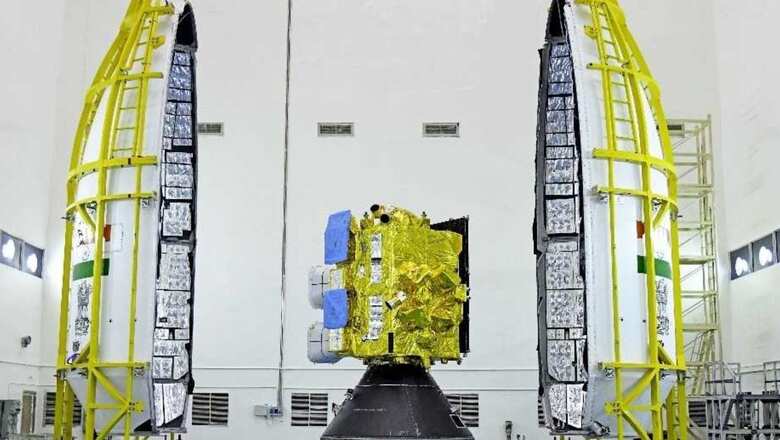
views
The ISRO is ready to launch its next meteorological satellite on the evening of February 17 to boost India’s weather prediction and disaster warning system. The INSAT-3DS satellite will be placed into a geostationary orbit by the GSLV, which will embark on its sixteenth mission from the Satish Dhawan Space Centre in Sriharikota.
The GSLV-F1/INSAT-3DS is fully-funded by the ministry of earth sciences and will strengthen weather observations as well land and ocean monitoring for forecasting and disaster warning. It will also bolster meteorological services alongside the operational INSAT-3D and INSAT-3DR satellites, ISRO said.
Data from the satellite will eventually be used by several organisations, including the India Meteorological Department (IMD), National Centre for Medium-Range Weather Forecasting (NCMRWF), Indian Institute of Tropical Meteorology (IITM), National Institute of Ocean Technology (NIOT), Indian National Centre for Ocean Information Services (INCOIS).
Apart from monitoring the earth’s surface, the satellite will also carry out oceanic observations and its environment in different spectral channels of meteorological importance. It will provide the vertical profile of various meteorological parameters of the atmosphere, as well as provide satellite-aided search and rescue services.
The new satellite will be powered by I-2k solar panels and Li-Ion 100Ah battery for eclipse support. About 51.7 metres tall, the GSLV is a three-stage rocket with a liftoff mass of 420 tonnes. Its first stage (GS1) comprises a solid propellant (S139) motor with 139-tonne propellant and four earth-storable propellant stages (L40) strap-ons that carry 40 tonnes of liquid propellant each. The second stage (GS2) is also an earth-storable propellant stage loaded with 40-tonne propellant. The third stage (GS3) is a cryogenic stage with a 15-tonne propellant loading of liquid oxygen (LOX) and liquid hydrogen (LH2).
The space agency has used the GSLV to launch various communications and navigation satellites in the past.




















Comments
0 comment